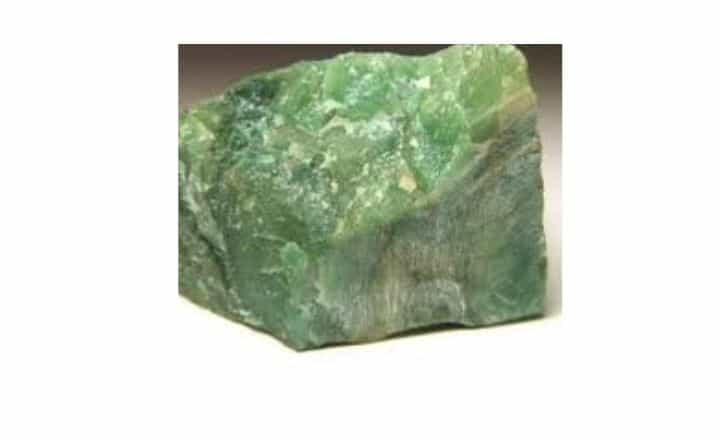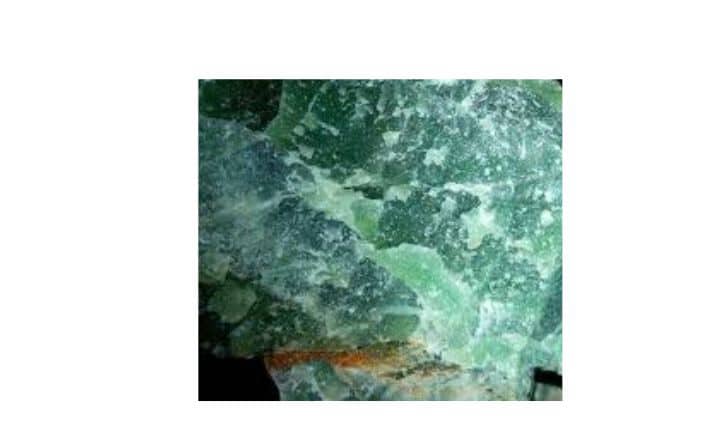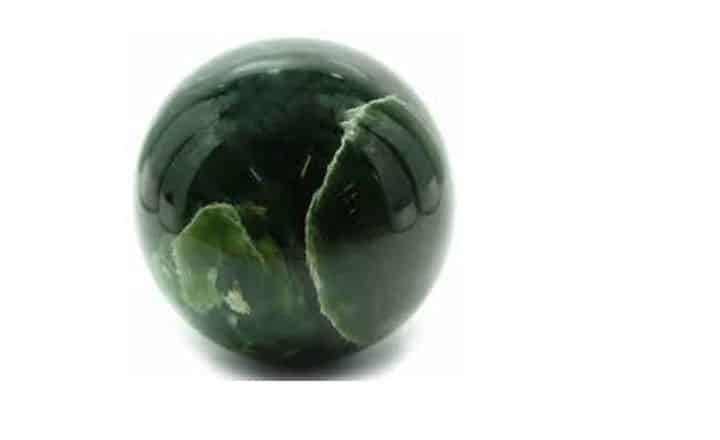What is Nephrite?
Nephrite is a mineral that belongs to the amphibole group and is one of the two types of jade, the other being jadeite. It consists mainly of calcium, magnesium, and iron-rich silicate minerals like actinolite and tremolite. The name comes from the Greek word “nephros,” meaning kidney, as it was once believed to have healing properties for kidney ailments.
Nephrite appears in colors ranging from creamy white to deep green, with some variations in yellow, brown, or black. Its durability and smooth texture make it a popular choice for both decorative and practical purposes.
Uses of Nephrite
Nephrite has been widely used throughout history for ornamental, practical, and spiritual purposes.
- Jewelry and Decorative Items
Nephrite is a favorite for jewelry, including bracelets, pendants, earrings, and rings. It has also been carved into sculptures, figurines, and ceremonial artifacts, with Chinese artisans historically crafting intricate designs from it. - Tools and Weapons
Due to its toughness, ancient civilizations, including the Maori, used nephrite to make knives, axes, and chisels. It was prized for its ability to hold a sharp edge and withstand heavy use. - Spiritual and Healing Uses
Many believe nephrite promotes emotional balance and protection. It is often associated with detoxification, kidney health, and stress relief. In crystal healing, it is used to promote inner peace and clarity.
Properties of Nephrite
Nephrite’s unique properties make it both beautiful and durable.

- Physical Properties
It is exceptionally tough due to its fibrous crystal structure, ranking between 6 and 6.5 on the Mohs hardness scale. It has a waxy luster and can range from opaque to semi-transparent. - Chemical Properties
Nephrite is primarily composed of calcium magnesium silicate, with small amounts of iron influencing its color. It is resistant to chemical weathering, making it long-lasting. - Metaphysical Properties
Many cultures associate nephrite with emotional healing and protection. It is linked to the heart chakra and is believed to help with stress relief and emotional balance.
Nephrite Mining
Nephrite is found in metamorphic rocks and is commonly associated with serpentinite formations. Major deposits are located in Canada, New Zealand, China, Russia, Australia, and the United States.
Mining methods range from small-scale hand extraction to large industrial operations using heavy machinery. Companies like EngiTech Ltd are involved in nephrite mining, focusing on sustainable and responsible practices.
Environmental Impact of Nephrite Mining
Mining nephrite can have environmental consequences, including habitat destruction, soil erosion, and water pollution.

- Habitat Disruption
Clearing land for mining can disturb ecosystems and wildlife. Responsible mining includes habitat restoration efforts to reduce this impact. - Soil Erosion and Water Pollution
Excavation can lead to soil erosion and sediment buildup in rivers, affecting water quality. Proper land management and sediment control help minimize these effects.
EngiTech Ltd and other responsible companies prioritize sustainable mining to reduce environmental harm and support local communities.
Conclusion
Nephrite is a gemstone with deep cultural, spiritual, and practical significance. Its toughness, beauty, and historical importance make it a prized material for jewelry, tools, and artifacts. While nephrite mining provides economic benefits, sustainable practices are essential to protect the environment and ensure its availability for future generations.
